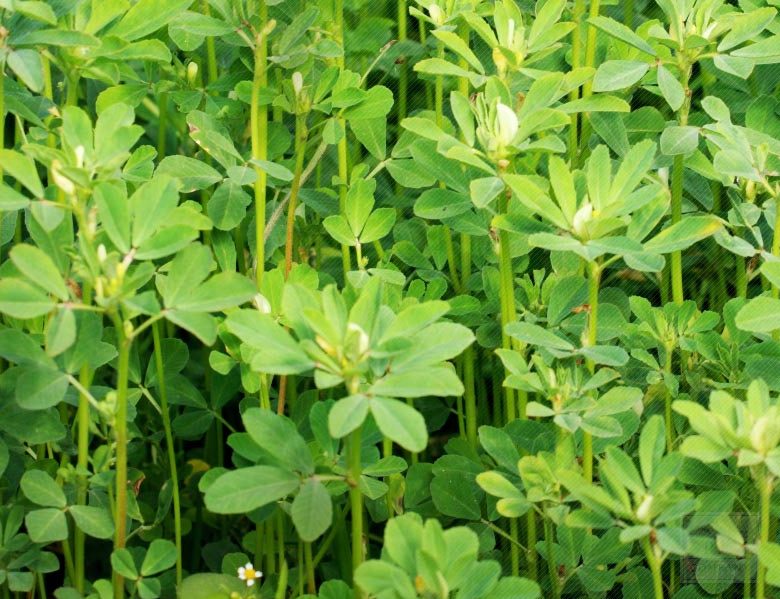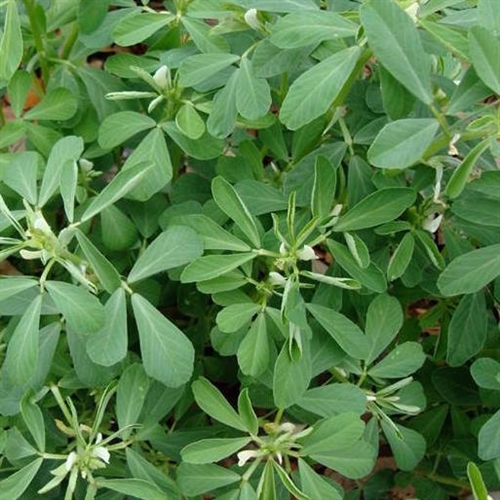मेथी की उत्पादन तकनीक
India is the world’s largest producers, consumers and exporter of seed spices. Among all the states of India, Gujarat and Rajasthan together contribute more than 80 per cent of the total seed spices production in the country and thus, both the states together are known as “seed spices bowl” of India.
In India, fenugreek occupies the third place in area after coriander and cumin and fourth place in production among all the minor spices grown.
Fenugreek is a multipurpose crop, every part of which is consumed in one or the other form. Its fresh tender leaves and pods are eaten as fried vegetables being rich in iron, calcium, protein and vitamins.
Besides this, it has immense medicinal utility.Fenugreek seeds have high nutritive values containing protein (9.5%), fat (10%), crude fiber (18.5%), carbohydrate (42.3%) and many other minor nutrients and vitamins. It also contains good percentage of gums (23.06%), mucilage (28%), trigonelline (0.13-30%), saponine (1.7%) and calorific values (370 calories per 100 gm seed).
The fenugreek is commercially cultivated for its seeds as well as one of the oldest spices thought the world. It is commercial significance largely grown in Rajasthan, Gujrat, Madhya Pradesh, Utter Pradesh and Bihar. Rajasthan produces the lion’s share of India’s production, accounting for over 80% of the nation’s total fenugreek output.
There are two species of the genus Trigonella:. Common methi (Trigonella foenum-graceum) and Kasuri methi (Trigonella corniculata)
Fenugreek (Methee) Production Technique


Climate and Soil: -
Fenugreek is widely distributed in most parts of the world because of its adaptation to different climatic conditions and environments.
It is grown in Rabi season, free from frost with moderately cool climate and low temperature for better vegetative growth during early stages while a dry and relatively high temperature favours better ripening and high seed yield.
Its cultivation required moderately cool, frost free and clear sky climate for its growth & development period. It is tolerant to drought and able to grow well in areas with moderate to low rainfall; its temperature requirement is as low as 10-15 °C, though it can neither grow well in extreme high nor in extreme low temperatures.
It can be also grown as a hot weather crop. The preferred soil type is loamy or sandy loam with pH value in the range of 6–7 and with good drainage conditions for better yield.
Kasuri methi needs a comparatively cooler climate. It is grown mainly in soils which have rich organic content.Well drained loamy soil is best suited for fenugreek cultivation.
Field preparation and sowing time: -
The soil should be brought to fine tilth by ploughing three or four times. Seeds are sown from September to the middle of November for seed purpose and for leaves it can be sown up March in the plains of northern India.
In the hills it is sown in March-April and October. Kasuri methi is sown in December.Rabi crop yields much more compared to kharif crop. Seed germinate in 6- 8 days of sowing.
Spacing: -
Seed sowing should be carried out @ 30 cm apart in rows with a planting space of 10 cm. The seed sowed in depth of not more than 0.5 cm.
Seed rate: -
The seed rate is 40-50 kg for common methi and 30-35 kg for Kasuri methi per hectare. Seeds are generally broadcast uniformly. Line sowing in rows 20-25 cm apart facilitates weeding and intercultural operation during the initial stage of crop growth. Usually, no thinning is required when it is grown for leafy vegetable but it is necessary for a seed crop.
Seed treatment:-
Soaking in a solution of 0.6% EMS IS recommended for improved germination and survival of seedlings. Seeds are soaked in cycocel solution at 50-100 ppm for improving germination and enhancing seedling growth.
Seeds are soaked in water for 2 days prior to sowing to enhance germination. The seeds are Treated with Rhizobium culture (Azospirillum 1.5 kg/ha + Trichoderma viridae @ 50 g/ha) for 12 kg of seeds. For good field inoculation with Rhizobium meliloti is useful.
Varieties: -
Pusa Early Branching, Pusa Kasuri, Rajendra Kranti, Hissar Sonali, Hisar Suvarna, Pant Ragini, Lam selection-1, RMt – 1, RMt 143 and Co1 etc.
Manure & Fertilizer: -
The field preparations add 15- 20 tons per hectare should be added to enrich field fertility. Being a leguminous crop needs very little nitrogen fertilizer. At the time of sowing N: P:K:: 30:25:40 kg/ha should be applied in the field.Whole of the fertilizer is applied before or at the time of sowing.
Use of growth regulators: -
A spray of ascorbic acid at 250-450 ppm improves the plant growth, enhances flowering and number of seed and size. Spraying of GA3 (Gibberellic acid) @ 10-100 ppm enhanced the internodal length, height and number of leaves. It also induces earlier flowering.
Irrigation: -
First irrigation is given immediately after sowing, second on the third day and subsequently irrigations are given at 7 - 10 days intervals.
Irrigation during early vegetative and grain formation stages is more critical than later stages. Excess irrigation is likely to make the crop susceptible to root rot disease. Avoid water stress at pod and seed development stage. Total of four to six irrigations applied for
Intercultural operations: -
Fenugreek is a broadcasted crop. Hoeing and weeding are done as required.One weeding and hoeing should be done about 25-30 days after sowing. At the time of thinning, weeding and earthing up is given.
Second weeding should be done 55-60 days after sowing. In common methi one top dressing with 40 kg N/ha can be done if it is kept for cuttings. 2-3 top dressing of nitrogen 20 kg each time should be done preferably after alternate cuttings in Kasuri methi.
Pest and Disease management: -
Frequently, the crop is subjected to the attack by a number of disease like damping off (Rhizoctonia solani ), powdery mildew ( Erysiphe polygoni ), rust ( Uromyces anthyllidis ), downy mildew ( Pernospora trigonella ) and leaf spot ( Cercospora traversian ). But all the disease is not so serious in fenugreek.
The young crop is attacked by damping off disease. This is caused by a fungus Rhizoctonia. It can be controlled by giving a drenching of a 0.1 % carbendazin in the initial stage of incidence of the disease.
Powdery mildew is another serious disease affecting the crop. If it is severe, it can be controlled by dusting 15 kg/ha of sulphur (5% dust).
The crop is not prone to severe damage by any insect. However, leaf eating caterpillar and pod borers are found to occur and these can be controlled by spraying ekalux (0.05%) or Malathion (0.2%).
Harvesting: -
The crop comes to harvest about 70 -160 days of sowing depending upon variety and season of sowing. The plant is pulled out entirely when the pods turn yellow, made in to small bundles and sun dried seeds are separated by beating with stick.
Kasuri methi can give 5-6 cuttings at an interval of 15-20 days. The produce is kept in shade and moist condition.
Yield: -
The yields depend upon the location, season varieties and harvesting time. The common methi yields leaves about 70-80 q/ha and Kasuri 90-100 q/ha of leaves.
Seed yield is higher if no cutting are made and left entirely for seed production. ‘Pusa Early Branching” gives a seed yield of 1200-1500 kg/ha. Kasuri methi gives a seed yield of 900-1000 kg/ha.
Storage: -
Seeds are stored in gunny bags lined with polythene paper. Vacuum gravity separators are used for cleaning fenugreek seeds. The seeds are to be stored with initial moisture level of 7 - 8 % and atan equilibrium relativity humidity of 40 %.
Authors:
Mahendra Kumar Atal and Ritu Kumari
Department of Horticulture (Vegetable & Floriculture)
Bihar Agricultural University, Sabour, Bhagalpur, Bihar – 813210, India
Email: -
